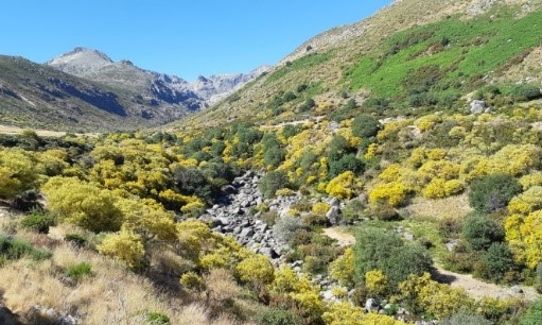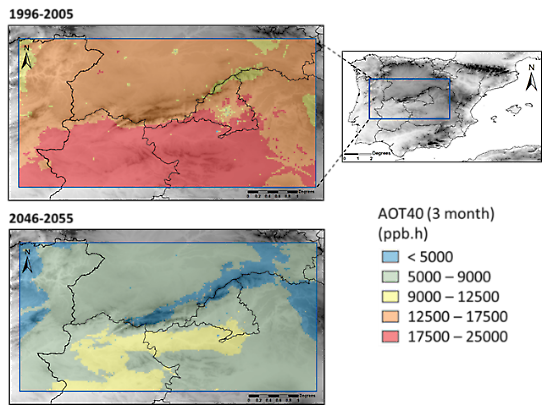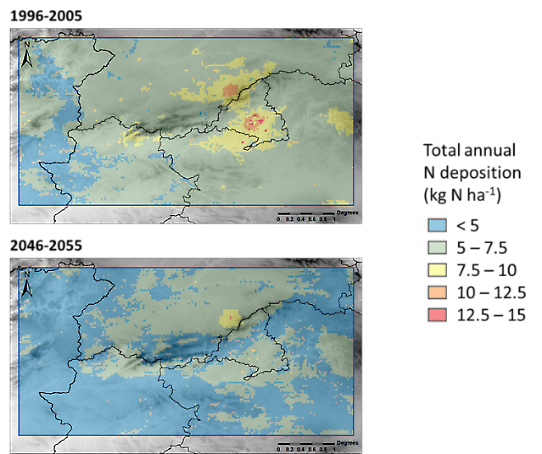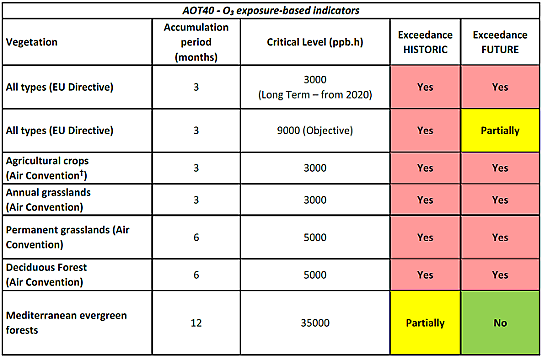The Spanish Central System mountain range extends more than 450 km across the centre of the Iberian Peninsula from northeast to southwest, passing approximately 50 km north of Madrid City. The bioclimatic, geo-morphological and lithological complexity has given rise to a very high biodiversity. As well as having a large number of Mediterranean plant species, the mountains also act as a refuge for species more typical of the colder climates in central Europe. Climate change represents a threat to this biodiversity. While low altitude species are able to move slowly up the mountain slopes, thus avoiding increasing temperatures and drought, those at high altitudes have no similar refuge. Air pollution is another threat to these mountain ecosystems, which are exposed to high concentrations of tropospheric ozone and high rates of atmospheric nitrogen deposition, problems that are exacerbated due to the proximity to Madrid.

Modelling results of the chemistry transport model CHIMERE were used in a risk assessment for impacts of ozone exposure and atmospheric nitrogen deposition to the vegetation of the Central System at a spatial resolution of approximately 3 km. Separate assessments were carried out for the historic period (1996-2005) and for a future period (2044-2055; CMIP5 RCP8.5 scenario). Historic and future impacts of ozone were estimated using AOT40 (accumulated ozone concentrations above a threshold of 40 ppb) objectives and critical levels defined in the current European Air Quality Directive and the UNECE Air Convention respectively, as well as an annual AOT40 critical level developed for Mediterranean evergreen forests calculated over an entire year.

The results show that for the historic period, all objectives and critical levels from the EU Directive and Air Convention were exceeded. However, the specific 12-month critical level for Mediterranean evergreen forests was only partially exceeded in the historic period. Impacts are expected to be reduced in the future, due to reductions in emissions of nitrogen oxides and volatile organic compounds that can lead to the formation of ozone. However, the improvements are not expected to be sufficient to meet the long-term objective of the Air Quality Directive or the critical levels of the Air Convention throughout the Central System; although a substantial improvement is expected for the more tolerant Mediterranean evergreen forest with a higher critical level based on the 12 month-AOT40 index. Work is ongoing to calculate the impacts using the ozone-absorbed dose (PODY) which considers the ozone entering plant tissues, which describes actual ozone plant damage. Ozone-dose based indices can better take into account the response of the vegetation under drought restrictions and changing climate.

Impacts due to nitrogen deposition were estimated by calculating the exceedance of the recently revised nitrogen empirical critical loads for the different vegetation types, taking the minimum of the range of values as a precautionary approach. Out of the 39 protected habitat types analysed within the modelled area, 18 exceeded the critical loads in the historic period. Of these, exceeded areas are expected to be reduced by more than 25% in the future for 16 habitat types. These improvements are mainly expected to affect shrub and pasture habitats. Further analysis will study the spatial patterns in the changes of critical load exceedances.
